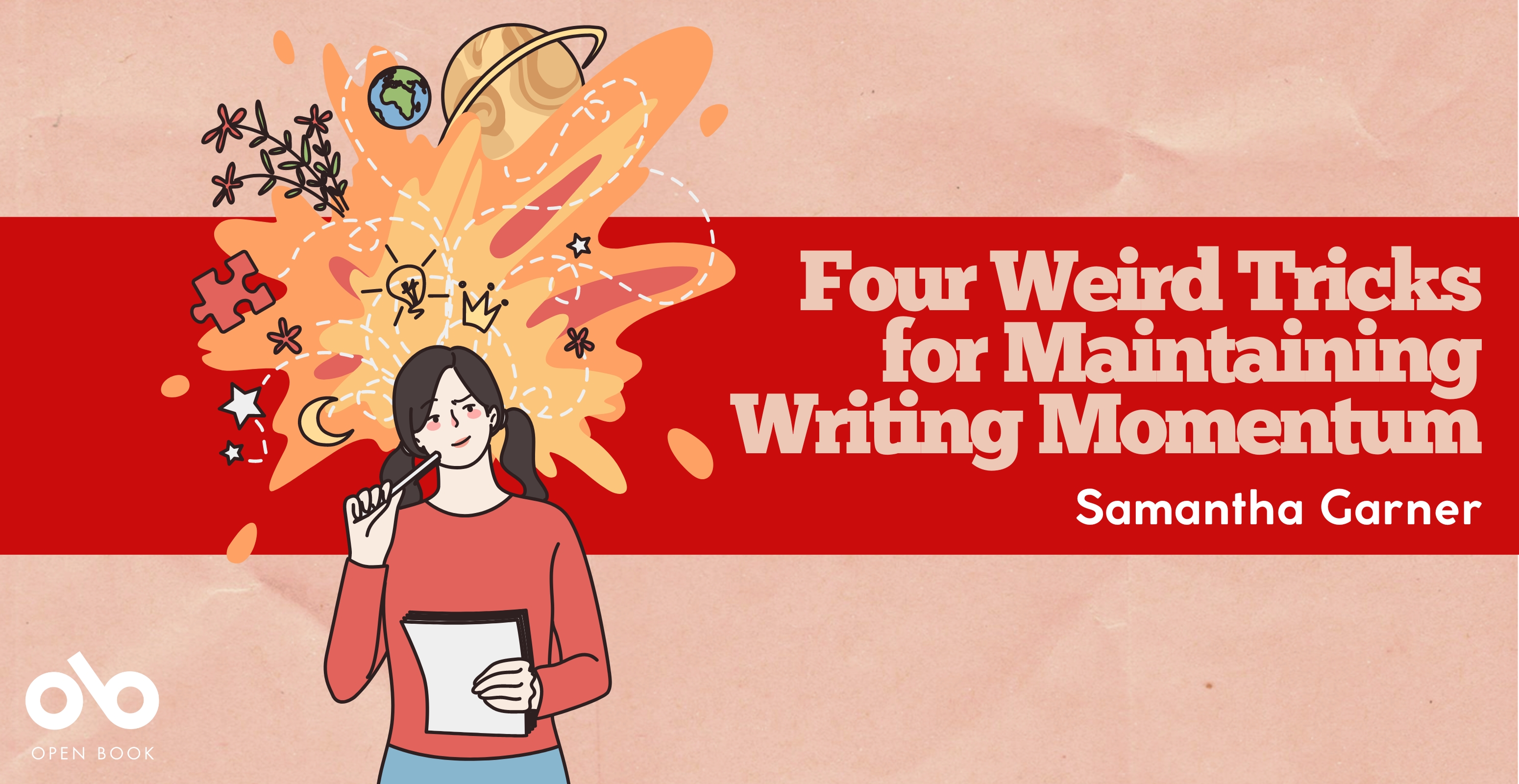Four Weird Tricks for Maintaining Writing Momentum
By Samantha Garner
As someone who doesn’t have a set writing routine, I’m always on the lookout for practical strategies to consistently keep my work going. Today I’d like to share four of my favourite tricks for maintaining writing momentum.
I end writing sessions mid-sentence
This is something I often do when my writing momentum is decent. In an ideal world I’ll end a writing session when I feel I’m at a good place to stop, but rarely do we live in an ideal world. For me, ending my day’s writing in the middle of the action—whether it’s literally action or just an important conversation—helps me remember where I was going in the overall scene.
This one can be a little tricky to implement regularly, I’ll admit. I’ve had to train myself to leave a sentence in a place that’s conducive to the flow. For example, a fragment like “I replied softly, hoping that Cassandra would take the hint and not—” makes it easier for me to pick up the thread than “I replied softly, hoping—”
I write just one more sentence
This tip helps me when my momentum is wobblier, like if I have a tricky scene coming up. I know that if I just leave it entirely unknown, I’ll overthink it and make it seem more daunting than it really is. So before I stop for the day I just write the first sentence of that tricky scene. Honestly, it’s a sentence I usually delete the next day—but it’s a start.
For example, if I’m writing about two characters going on a long journey to a forbidden city, it often feels natural to stop writing just before they arrive. Instead, I write something like, “The city gates stood open, revealing a strange mist that smelled of lilacs.” For all I know, there will be no lilac-scented mist when I return to that scene. But at least my characters are there looking at something, and my subconscious can take it from there.
This one is also fun to combine with the previous one for extra momentum-y goodness.
I leave placeholder notes for myself throughout the document
This tip might seem like a no-brainer to many, but I honestly never did it until I met my writers’ group the Semi-Retired Hens in 2018. There I was, reading through the chapters I’d been sent ahead of our first meeting, having my world absolutely rocked by seeing something like: [DESCRIPTION OF CHARACTER’S WORK TASK HERE]. You could do that?! As the sort of writer who had always dropped everything to figure out the character’s work task description then and there, it was a revelation.
So I tried it. The next time I encountered something in my writing that didn’t need to be sorted out at that moment, that wasn’t critical to getting the scene written, I left an all-caps note for myself in square brackets and moved on. Instead of spending an hour researching one small thing, I spent that hour writing. A miracle. And I could go back to those notes and flesh them out on lower-brain-energy days when word count was less possible for me. Win-win!
I have an ongoing email thread with myself about book ideas
I used to keep a notebook by my bed in which I’d write down middle-of-the-night book ideas, but I quickly discovered that it wasn’t practical for me. Not only did lighting the page and fumbling for the pen sometimes wake up my partner, but I also found that 3am handwriting is utterly illegible the next day. Instead, I turned to email. I have an ongoing email thread with the project title as the subject line, and every new 3am idea is a new email. This can also of course be done with a notes app on your phone. It’s great during the day too, and has saved me during long walks. Our brains love to surprise us with the best ideas at the most inconvenient times, don’t they? Relying on something as fallible as a brain to remember things doesn’t often work, so using tools where I can has really made the difference.
Your CanLit News
Subscribe to Open Book’s newsletter to get local book events, literary content, writing tips, and more in your inbox
These are four ways that’ve helped me maintain writing momentum and reduce my chances of staring at my blinking cursor, wondering what to do. I hope they help you too!
The views expressed by Open Book columnists are those held by the authors and do not necessarily reflect the views of Open Book.
Samantha Garner is the author of The Quiet is Loud, shortlisted for the 2022 Kobo Emerging Writer Prize. A Canadian of mixed Filipino-Finnish background, her character-driven fantasy novels explore themes of identity and belonging. When not writing, Samantha can be found daydreaming in a video game or boring a loved one with the latest historical fact she’s learned.
She can be found online at samanthagarner.ca and on Instagram and Twitter at @samanthakgarner.



